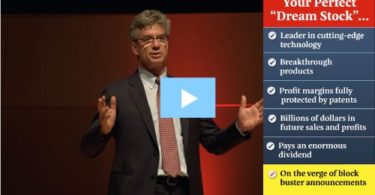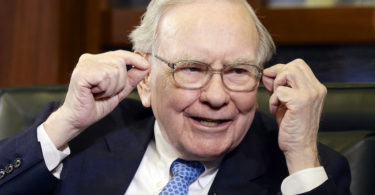Dividend Policy & Yield
Neither TSHA nor GBIM offers any dividend income to investors. Taysha Gene Therapies has never paid a dividend, as it remains in a growth phase financed by equity and debt. In fact, Taysha’s loan covenants prohibit it from paying cash dividends ([4]). This is unsurprising for a biotech with an accumulated deficit of over $600 million and ongoing losses ([4]). Its focus is on reinvesting in R&D rather than returning cash to shareholders. GlobeImmune likewise has no dividend history – the company has no current operations or profits to distribute. GlobeImmune terminated its Nasdaq listing in 2016 ([5]) and became a subsidiary of ImmunityBio, so any notion of dividends is moot. In short, both firms carry a 0% dividend yield, and metrics like AFFO/FFO or payout ratios are not applicable. Investors in these stocks are seeking potential capital gains, not income.
Leverage and Debt Maturities
Taysha (TSHA) carries a modest amount of debt relative to its cash. In late 2023, Taysha drew down a $40 million term loan from Trinity Capital ([4]) ([4]). This loan bears a high interest rate of 12.75% and is interest-only for the first 3 years (extendable to 4 years upon achieving certain milestones) ([4]). Principal repayment doesn’t kick in until late 2027, with the bulk of the $40 million due at maturity in November 2028 ([4]) ([4]). Notably, Taysha strengthened its balance sheet with a $230 million equity offering in May 2025, boosting cash reserves to $312.8 million as of June 30, 2025 ([1]) ([1]). Thanks to this cash infusion, Taysha now has far more cash than debt on its balance sheet ([6]) – a strong liquidity position that extends its operational runway into 2028 ([1]). The term loan is also secured by Taysha’s assets and has no financial maintenance covenants ([4]) ([4]), giving the company breathing room to execute its clinical programs.
GlobeImmune (GBIM), on the other hand, appears to have no significant debt. The firm’s last SEC filings (in 2016) show no material borrowings, and after losing its Nasdaq listing ([5]), it hasn’t publicly reported any leverage. GlobeImmune’s assets and drug programs were largely handed off to NantCell/ImmunityBio in 2017 ([7]) ([7]), so any funding needs are presumably handled by its parent. As a result, GlobeImmune has no known debt maturities or interest obligations in its shell state. In summary, Taysha is leveraged but well-capitalized, with a structured long-term loan, whereas GlobeImmune carries no debt simply because it has virtually no standalone business.
Coverage and Liquidity
Despite Taysha’s debt, its liquidity and coverage ratios are solid for now. Taysha’s current ratio is about 5.5, indicating that current assets are over 5× its short-term liabilities ([8]). The company’s quick ratio is similarly 5.51 ([8]), reflecting a large cash buffer relative to payables. This means Taysha can comfortably meet near-term obligations, including interest payments. In fact, interest expense was only ~$19 thousand for Q1 2025 ([4]) – the loan’s interest is largely being accrued through fair-value adjustments rather than cash outlay in the early years. Even when cash interest ramps up (roughly $5 million annually at 12.75%), Taysha’s $312.8 million cash position covers it many times over ([1]). In essence, interest coverage is not an immediate concern for Taysha; the company’s cash on hand could pay its annual interest expense dozens of times over. However, since Taysha has no positive earnings or cash flow yet, its EBITDA-to-interest coverage is negative. The true test of coverage will be if and when Taysha must refinance or amortize debt in 2027–2028 – by then it hopes to have product revenue to support fixed charges.
GlobeImmune has no meaningful operations, so coverage ratios are not meaningful for it. With no debt and no active business, GlobeImmune has no interest or fixed charges to cover. On the flip side, it has no current assets either – any liquidity for remaining obligations (if any) would depend on its parent company. Essentially, GlobeImmune’s liquidity is negligible on a standalone basis. Its last known cash was from years ago; today the public entity exists only on paper. Shareholders cannot rely on any assets or cash flows at the GBIM level. This starkly contrasts with Taysha’s ample liquidity, which has been bolstered by external financing to fund its R&D pipeline.
Valuation Comparison
The market valuations of TSHA and GBIM underscore their vastly different prospects. Taysha Gene Therapies currently commands a market capitalization in the mid-hundreds of millions of dollars. At a stock price around $3 per share in late 2025, Taysha’s implied market cap is roughly $800–900 million ([2]). This valuation is almost entirely based on Taysha’s future potential rather than present earnings. In fact, Taysha’s price-to-sales ratio is over 100× – the company recorded only ~$8.3 million in revenue (over the past year, mainly from a partnership), resulting in a P/S of 103.5 ([2]). With a net loss of $89 million in the last year, traditional metrics like P/E are negative (TSHA’s trailing EPS was –$0.34 ([2])). Investors instead value Taysha on metrics like pipeline progress and projected future cash flows. Notably, Wall Street analysts remain bullish: Taysha has a consensus price target around $7–8, implying significant upside from current levels ([2]). Its enterprise value (~$500–600 million after backing out cash) suggests the market is assigning substantial value to Taysha’s flagship gene therapy for Rett syndrome and related assets.
GlobeImmune’s valuation, by contrast, is almost nonexistent. GlobeImmune’s shares trade on the OTC market at mere fractions of a cent. Recent quotes have GBIM around $0.0001–0.0002 per share, translating to a market cap on the order of only a few hundred dollars in total ([3]). Essentially, public investors have completely written off the company’s value. This token market cap reflects the reality that GlobeImmune has no independent operations or tangible assets after its programs were transferred. Even looking back, GlobeImmune never generated significant recurring revenue – its value was tied to a once-promising Tarmogen immunotherapy platform that is now in the hands of ImmunityBio. With no sales and no active pipeline, GBIM has no meaningful valuation multiples to speak of. Any “investment” in GlobeImmune stock today is purely speculative, as the stock is illiquid and nearly valueless. In stark summary, Taysha is valued as a high-risk/high-reward growth biotech, whereas GlobeImmune is valued at essentially $0 by the market.
Risks
Both companies involve substantial risk, but the nature of those risks differs markedly between TSHA and GBIM:
– Taysha Gene Therapies – Key Risks: As an emerging biotech, Taysha faces the classic clinical and regulatory risks. The company’s future hinges on its lead gene therapy (TSHA-102 for Rett syndrome) achieving successful pivotal trial results and ultimately FDA approval. Failure or delays in this program would be devastating, given Taysha’s heavy focus on it. Taysha has an extensive history of net losses and expects to continue incurring significant losses for the foreseeable future ([4]). This implies ongoing financing risk – despite the recent cash raise, the company will likely need additional capital or partnership deals if development timelines lengthen or commercialization costs rise. Another risk is dilution: Taysha’s share count jumped significantly in 2025 after issuing ~83 million new shares and warrants in the follow-on offering ([9]) ([9]), and future equity raises could further dilute shareholders. There is also pipeline concentration risk – beyond Rett syndrome, other programs (like TSHA-120 for GAN) have seen setbacks or reduced priority, meaning the company currently has “all its eggs in one basket.” Additionally, gene therapy development carries unique safety risks (e.g. unforeseen immune reactions or toxicity), which could derail a program. Investors should also note that any potential benefits from Taysha’s partnership with Astellas (which holds an option on the Rett and GAN programs) depend on Astellas’s decision to exercise those options ([10]) ([10]). If Astellas opts out, Taysha would lose a future source of funding and validation. Lastly, macro-market risk is relevant: as a pre-revenue biotech, TSHA’s stock is very sensitive to shifts in risk appetite and can be volatile (β ~0.98, roughly the market’s volatility) ([2]). An investment in Taysha could suffer large swings or losses if clinical news disappoints or if biotech sentiment sours.
– GlobeImmune – Key Risks: GlobeImmune represents an extremely high-risk scenario bordering on liquidation value. The primary risk is total loss of investment – with the stock trading at virtually zero, even a slight uptick or downtick could mean 100% swings, and there is a real chance the remaining public shares could become worthless. GlobeImmune no longer files financial reports (having deregistered with the SEC in 2016 ([5])), so shareholders have no transparency into its finances or any corporate actions. This lack of disclosure is a major red flag in itself. Another risk is ownership concentration and lack of control: ImmunityBio (via NantCell) acquired a controlling interest in GlobeImmune in 2017 ([7]), and now GlobeImmune operates as a subsidiary of ImmunityBio ([2]). Minority shareholders thus have no say and must rely on the parent’s decisions. There is a risk that the parent company could formally dissolve or absorb GlobeImmune without any compensation to outside shareholders. Additionally, any clinical or technological risk that GlobeImmune once bore has effectively transferred to ImmunityBio’s pipeline – meaning GBIM stockholders don’t even benefit directly if those trials succeed. For example, GlobeImmune’s Tarmogen vaccine programs (for Hepatitis B, various cancers, etc.) were licensed out to NantCell/ImmunityBio ([7]); even if one of those assets eventually works, the value flows to ImmunityBio, not to GBIM’s penny-stock holders. Finally, the liquidity risk with GBIM is extreme – the stock barely trades, so investors cannot easily exit their position. In summary, the risks associated with GlobeImmune stock are akin to holding an empty shell company – the downside is effectively capped at a 100% loss, and even unforeseen upside would likely be realized outside the GBIM equity. This is risk with little reward, whereas Taysha at least offers potential upside to compensate for its risks.
Red Flags and Warning Signs
Several red flags emerge when assessing these companies’ financial health and governance:
– Taysha – Red Flags: One notable concern is rapid cash burn. Taysha spent over $20 million per quarter on R&D and overhead in the first half of 2025 ([1]) ([1]). Such a high burn rate means the company is continuously consuming capital; any unforeseen trial setback or delay could force Taysha to raise funds again sooner than expected. Another red flag is the company’s cumulative deficit of $623.8 million as of Q1 2025 ([4]). This highlights how much money has been spent without yet producing a commercial product – a common situation in biotech, but still a reminder of the uphill battle to profitability. The substantial share dilution in May 2025 is also cautionary; issuing nearly 40% new shares (and equivalent warrants) in one go at $2.75/share ([9]) ([9]) significantly diluted existing shareholders. While it shored up the balance sheet, such dilution can be value-erosive if it happens repeatedly. Another governance-related flag: the Astellas strategic investment means a large corporate shareholder (Astellas owns ~15%) has special rights, including board observation and say in any change-of-control event ([10]) ([10]). This could complicate a future buyout or partnership if Astellas’s interests diverge from other shareholders’. On the operational side, the silence around TSHA-120 (GAN program) is concerning – the program’s status is unclear, possibly reflecting regulatory hurdles or subpar data (regulatory feedback on TSHA-120 has been pending since 2022 ([10])). The heavy dependence on a single trial (Rett syndrome) could be viewed as a red flag in terms of diversification. Lastly, from a stock perspective, Taysha’s valuation is stretched relative to current fundamentals – as noted, it trades at over 100× sales and its stock price has run up well ahead of any revenue. InvestingPro has suggested TSHA might be overvalued vs. fair value metrics ([6]). If the market’s optimism fades or if trial data are anything short of excellent, the stock could correct significantly. Investors should proceed with caution, keeping an eye on Taysha’s cash utilization and trial outcomes in the coming quarters.
– GlobeImmune – Red Flags: Almost every indicator around GBIM is a red flag. First, the company’s cessation of SEC reporting (with a Form 15-12B filed to terminate registration) in mid-2016 ([5]) means it operates with virtually no financial oversight or transparency. This is often a sign of a company that has either gone private, is insolvent, or has no meaningful shareholder base. In GlobeImmune’s case, it coincided with NantCell taking control and delisting the stock. The stock now trades OTC, which is itself a red flag due to the typically low disclosure standards on that market. Second, GlobeImmune has no investor communications beyond 2017 – no conference calls, no annual meetings, nothing to guide shareholders. The last press release in 2017 announced the NantCell deal ([7]); since then management has been virtually silent. Another glaring red flag is the minuscule market cap (<<$1,000) ([3]) and share price ($0.0001). This suggests that even the market makers consider the equity to be nearly worthless – it’s a sign of extreme distress or abandonment. Additionally, the fact that 23.5% of GlobeImmune’s shares are owned by insiders (likely NantCell/ImmunityBio) ([2]) implies the float is very limited. Low float can lead to erratic price moves (indeed, GBIM’s calculated beta is an absurd –275, a meaningless figure given the lack of trading liquidity ([2])). The ownership structure also hints that outside shareholders are at the mercy of the controlling insider; for instance, ImmunityBio merged another Soon-Shiong-affiliated company (NantKwest) in the past, and could do something similar with GlobeImmune’s stub without substantial benefit to minority holders. Finally, a red flag from a strategic standpoint: all of GlobeImmune’s once-promising drug candidates are in someone else’s hands. It had collaborations with Gilead and Celgene in the past ([2]), but those appear to have led nowhere for GBIM itself. The parent company ImmunityBio has been struggling too (receiving an FDA rejection on its lead asset in 2023), which casts doubt on whether any of GlobeImmune’s legacy programs will ever reach fruition. In sum, the persistence of a GlobeImmune public listing appears to serve no purpose for shareholders – a glaring warning sign that this stock is not a viable investment vehicle.
Open Questions
Taysha Gene Therapies now enters a critical phase with many unanswered questions on the horizon: Will the pivotal REVEAL trial of TSHA-102 in Rett syndrome meet its efficacy endpoints and clear the path to FDA approval? The early data are encouraging (100% of treated patients showed a regained developmental milestone) but the pivotal single-arm design will face scrutiny ([1]) ([1]). If TSHA-102 succeeds, can Taysha commercialize it alone, or will it seek a larger partner (perhaps Astellas) to launch this gene therapy globally? Taysha’s cash runway extends into 2028 ([1]), but is that truly sufficient to reach commercialization and breakeven? The company will likely need to scale up manufacturing and medical affairs effort in the coming years, which could accelerate cash burn. Another looming question is whether Astellas will exercise its exclusive option on TSHA-102 (and/or TSHA-120) – such an exercise could bring Taysha additional milestone cash and resources ([10]) ([10]), but if Astellas passes, Taysha must fend for itself or find new partners. The fate of TSHA-120 for GAN is also unclear: will Taysha revive that program or let Astellas take the lead? Moreover, the gene therapy field is evolving – what if competing approaches for Rett syndrome emerge (for example, RNA or small-molecule therapies)? Taysha will need to maintain its lead and demonstrate durable benefits to justify what could be a high price point for its one-time treatment. Finally, given Taysha’s high valuation relative to current fundamentals, can the company meet investor expectations fast enough to support its stock price? Biotech markets can be unforgiving if progress slows down. These open questions will determine whether TSHA remains a frontrunner or faces setbacks in the next leg of this “showdown.”
For GlobeImmune, the questions are even more fundamental: Is there any future for the GBIM public stock, or will it eventually be delisted entirely? The stock’s extreme low price raises the possibility of a clean-up or termination of the ticker. One wonders why ImmunityBio has left a tiny fraction of GlobeImmune outstanding at all – there may be legal or logistical reasons, but it leaves minority holders in limbo. An open question is whether ImmunityBio might offer to buy out or roll up the remaining shares (perhaps via a reverse split or merger) at some token value, or simply leave them to fade. For those still holding GBIM, a critical question is how (or if) they can ever realize any value: will ImmunityBio allocate any royalties or consideration to GlobeImmune equity if the Tarmogen platform yields success, or has all value already been internalized at the parent level? As of now, there’s no indication of any value trickling down – for example, the ongoing Nant/ImmunityBio “QUILT” trials using GlobeImmune’s GI-4000 series are completely under ImmunityBio’s umbrella ([7]) ([7]). Another open question: what happens if ImmunityBio itself faces financial trouble? (ImmunityBio has had going-concern warnings recently). In a worst-case scenario, could GlobeImmune’s assets be sold or auctioned in a bankruptcy, and would GBIM shareholders have any claim? Unfortunately, these open questions highlight that GlobeImmune’s story is essentially closed – any remaining intrigue lies in corporate housekeeping, not in growth or turnaround prospects.
Conclusion
In this “next big financial showdown,” Taysha Gene Therapies (TSHA) and GlobeImmune (GBIM) could not be more different. Taysha is a high-risk but vibrant contender: it has a late-stage therapeutic candidate, significant funding, and strong institutional support, but also must execute flawlessly to justify its valuation. GlobeImmune, by contrast, is essentially a relic – its scientific battles are being fought by another company, leaving GBIM stock as an empty shell. From a financial perspective, Taysha clearly dominates on all counts (liquidity, backing, pipeline potential), whereas GlobeImmune is a cautionary tale of what happens when a biotech fails to deliver and is left without assets. Investors focusing on dividends, coverage or fundamental value will find little of interest in either at present, but at least Taysha offers a potential narrative of future success (with commensurate risks). GlobeImmune offers practically nothing besides a lottery ticket on corporate maneuvers. Therefore, while the title frames a showdown, the contest is one-sided: TSHA is the only one of these two with the financial heft and momentum to be in the running, whereas GBIM has already bowed out of the ring. Any investment decision here is straightforward – bet on Taysha’s innovative gene therapy with all the inherent risks, or avoid GlobeImmune’s virtually valueless stock – because in this matchup, only one player is still in the game ([2]).
Sources
- https://ir.tayshagtx.com/news-releases/news-release-details/taysha-gene-therapies-reports-second-quarter-2025-financial/
- https://etfdailynews.com/2025/09/30/taysha-gene-therapies-nasdaqtsha-globeimmune-otcmktsgbim-head-to-head-analysis/
- https://alphaspread.com/security/otc/gbim/summary
- https://sec.gov/Archives/edgar/data/1806310/000095017025072036/tsha-20250331.htm
- https://globeimmune.com/investors/sec-filings/
- https://investing.com/news/transcripts/earnings-call-transcript-taysha-genes-q2-2025-revenue-beats-forecast-93CH-4185320
- https://biospace.com/globeimmune-provides-update-on-recent-clinical-trial-developments
- https://defenseworld.net/2025/06/16/equities-analysts-offer-predictions-for-tsha-fy2025-earnings.html
- https://globenewswire.com/news-release/2025/05/29/3090036/0/en/taysha-gene-therapies-announces-pricing-of-public-offering-of-common-stock-and-pre-funded-warrants.html
- https://astellasgenetherapies.com/press_release/astellas-and-taysha-gene-therapies-announce-strategic-investment-to-support-development-of-taysha%E2%80%99s-aavbased-gene-therapy-programs
For informational purposes only; not investment advice.






